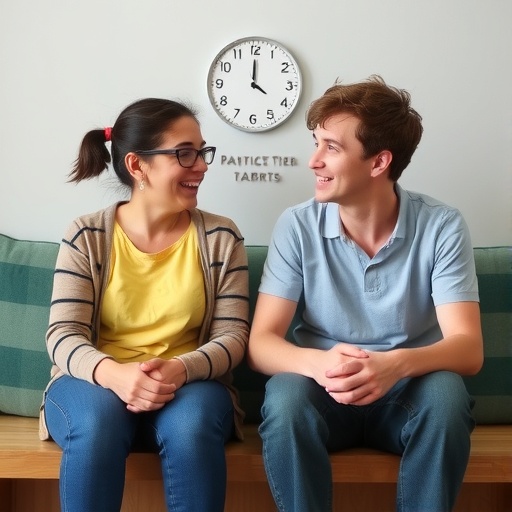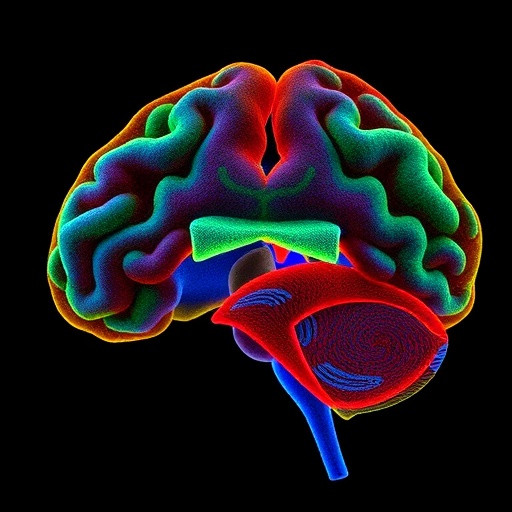Dynamic Time Warp (DTW) analysis has emerged as a revolutionary tool in the realm of psychiatric research. The complexity and variability of human behavior make direct comparisons between clinical observations quite challenging. DTW offers an elegant solution to this problem, providing researchers with a means to analyze and interpret time-series data in a way that accounts for misalignments in time sequences. This approach not only enhances data efficiency but also increases the relevance of findings in clinical settings. In this discussion, we will explore the utility of DTW, particularly in the study of psychiatric disorders, elaborating on its principles and applications.
At its core, Dynamic Time Warping works by aligning sequences that may vary in speed. This feature is particularly useful in psychiatric research, where patient behaviors may not follow a fixed pattern. Individual patients often express symptoms that fluctuate in duration and intensity, reflecting the nonlinear nature of mental health dynamics. Fluctuations in mood, anxiety levels, and cognitive performance can vary significantly, and traditional methods might overlook these nuances. DTW allows researchers to analyze these dynamic processes, providing a more accurate representation of patient conditions over time.
How does DTW achieve this? The method employs an algorithm that calculates the optimal alignment between two time-series datasets. It does this by measuring the distance between different points in the datasets and creating a cost matrix to determine the path of least resistance for aligning them. This path allows DTW to stretch or compress sequences based on their characteristics, leading to a more meaningful comparison. When applied to psychiatric data, the nuances of patient behavior can be captured, facilitating deeper insights into their conditions.
One of the significant advantages of using DTW in psychiatric studies is its scalability. Often, psychiatric research encompasses large volumes of data collected from numerous patients over extended periods. With traditional analysis techniques, handling such vast datasets can become cumbersome and less efficient. DTW’s ability to process these datasets in a manner that preserves the integrity of the underlying dynamic processes leads to more effective utilization of available data. Consequently, researchers can derive insights more rapidly, fostering a better understanding of mental health conditions.
Furthermore, DTW contributes to a data-efficient approach in analysis. Conventional analytic frameworks might require extensive manual pre-processing of data sets to get them into a comparable structure, which can be both time-consuming and fraught with the risk of introducing bias. In contrast, DTW minimizes the need for such preprocessing by automatically aligning and comparing data. This not only enhances precision but also allows researchers to focus more on interpretation rather than data preparation, yielding potentially faster advancements in psychiatric understanding.
The clinical relevance of DTW is also noteworthy. With a clearer understanding of the dynamics of psychiatric disorders, healthcare providers can tailor treatment plans based on the real-time behaviors of their patients. For instance, if a clinician observes specific patterns in mood fluctuations, they can devise interventions that are more timely and relevant to the patient’s current state. This kind of personalized treatment is crucial in psychiatric care, where one-size-fits-all approaches may fall short.
Studies have shown that traditional diagnostic tools often lack the sensitivity required to capture the granular details of mental health conditions. DTW, by providing a more nuanced analysis of behavioral data, can bridge this gap. It encourages a shift toward viewing mental health issues not as static labels but as dynamic processes that evolve over time. This perspective aligns with contemporary views on mental health, which emphasize the significance of individual experiences and trajectories.
Moreover, the implications of DTW extend beyond clinical practice to the realm of research methodologies as well. Researchers can apply DTW to a variety of time-series data, including physiological measurements like heart rate variability and neuroimaging data. By integrating diverse data types, the potential for cross-modal insights expands significantly. Understanding how physiological changes align with behavioral shifts can enhance our comprehension of psychiatric disorders in more holistic terms.
Implementing DTW in research requires a solid grasp of both the theoretical underpinnings and practical application of the technique. Researchers need to ensure they select appropriate datasets and variables for analysis, understanding the potential limitations and considerations that come with the approach. For example, the quality and resolution of the data can affect the DTW outcomes. Therefore, researchers must remain vigilant regarding data integrity throughout their study designs.
One primary concern when applying DTW is potential overfitting, wherein the model captures noise rather than meaningful trends. To mitigate this, researchers must be adept at distinguishing between signal and noise in their datasets. This involves rigorous validation processes and may require incorporating complementary methodologies to corroborate DTW findings. Nevertheless, when applied thoughtfully, DTW presents a powerful tool for unlocking insights within complex behavioral datasets.
Through a step-by-step application of DTW, researchers can offer insights that not only advance academic understanding but also translate into practical tools for clinicians. For example, a recent tutorial on DTW provided a comprehensive guide on using this technique effectively for behavioral analysis in psychiatry. The process outlined the alignment of temporal sequences, measuring discrepancies, and interpreting the results in clinically relevant terms. When practitioners adopt these tools, the advancements in research can quickly filter down to influence patient care directly.
The future prospects for DTW in psychiatric research appear promising. As technological frameworks improve, and data collection techniques empower researchers, even more nuanced applications of DTW will likely surface. This may include real-time monitoring of patients, facilitated by wearable technology that tracks mood and behavioral patterns continuously, offering an unprecedented depth of insights into psychiatric conditions.
In conclusion, Dynamic Time Warping represents a significant leap forward in the analysis of dynamic processes in psychiatric disorders. Its capacity to capture the complexity of human behavior makes it an essential tool for both researchers and clinicians. By understanding and leveraging the capabilities of DTW, the field of psychiatry can embrace a future that prioritizes nuanced, data-driven insights to inform treatment and improve patient outcomes. The conversation around DTW and its applications is just beginning, and as more researchers engage with this methodology, the potential for groundbreaking discoveries in mental health continues to expand.
Subject of Research: Dynamic Time Warp (DTW) in psychiatric disorders analysis.
Article Title: Dynamic Time Warp (DTW) as a scalable, data-efficient, and clinically relevant analysis of dynamic processes in patients with psychiatric disorders: a tutorial.
Article References:
Kopland, M.C.G., Giltay, E.J. Dynamic Time Warp (DTW) as a scalable, data-efficient, and clinically relevant analysis of dynamic processes in patients with psychiatric disorders: a tutorial.
J Eat Disord 13, 230 (2025). https://doi.org/10.1186/s40337-025-01414-8
Image Credits: AI Generated
DOI:
Keywords: Dynamic Time Warping, psychiatric disorders, data analysis, clinical relevance, mental health.
Tags: Analyzing Fluctuations in Patient SymptomsClinical Applications of DTWDTW Algorithm for Patient Behavior AnalysisDTW for Mental Health ResearchDynamic Processes in Psychiatric DisordersDynamic Time Warping in PsychiatryEnhancing Data Efficiency in Psychiatric StudiesInterpreting Time-Varying Clinical DataMisalignment in Clinical ObservationsNonlinear Behavioral Patterns in PsychiatryTime-Series Data Analysis in Mental HealthUnderstanding Mood and Anxiety Variability





